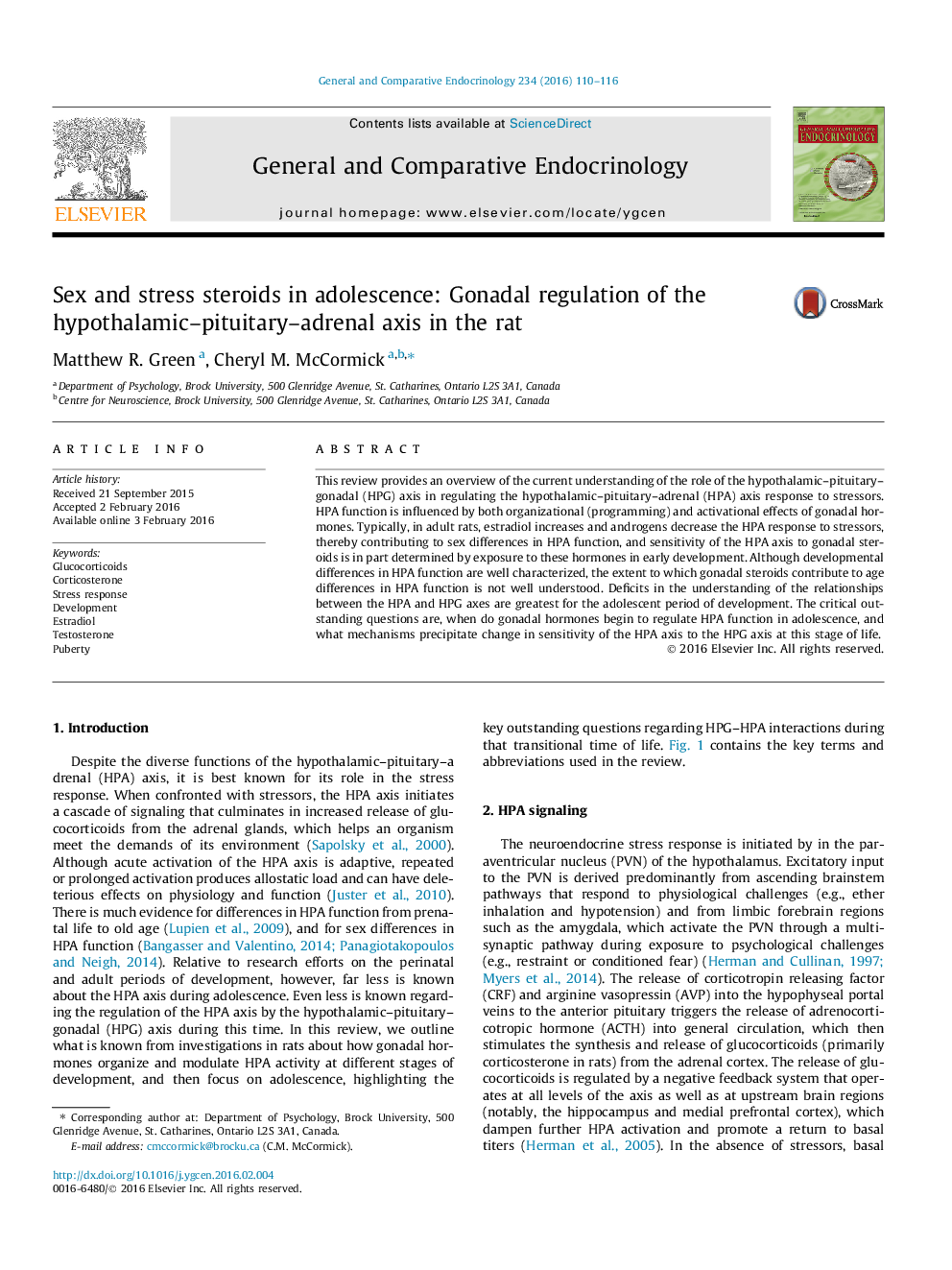| Article ID | Journal | Published Year | Pages | File Type |
|---|---|---|---|---|
| 2799793 | General and Comparative Endocrinology | 2016 | 7 Pages |
•The review describes HPA function and the stress response.•An overview of activational effects of sex steroids on the HPA stress response.•An overview of organizational effects of sex steroids on the HPA stress response.•Adolescence is a time of transition in gonadal influence on HPA function.
This review provides an overview of the current understanding of the role of the hypothalamic–pituitary–gonadal (HPG) axis in regulating the hypothalamic–pituitary–adrenal (HPA) axis response to stressors. HPA function is influenced by both organizational (programming) and activational effects of gonadal hormones. Typically, in adult rats, estradiol increases and androgens decrease the HPA response to stressors, thereby contributing to sex differences in HPA function, and sensitivity of the HPA axis to gonadal steroids is in part determined by exposure to these hormones in early development. Although developmental differences in HPA function are well characterized, the extent to which gonadal steroids contribute to age differences in HPA function is not well understood. Deficits in the understanding of the relationships between the HPA and HPG axes are greatest for the adolescent period of development. The critical outstanding questions are, when do gonadal hormones begin to regulate HPA function in adolescence, and what mechanisms precipitate change in sensitivity of the HPA axis to the HPG axis at this stage of life.
